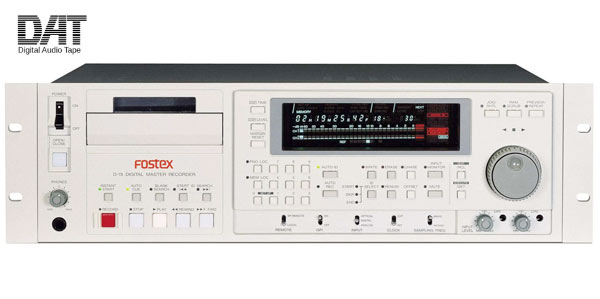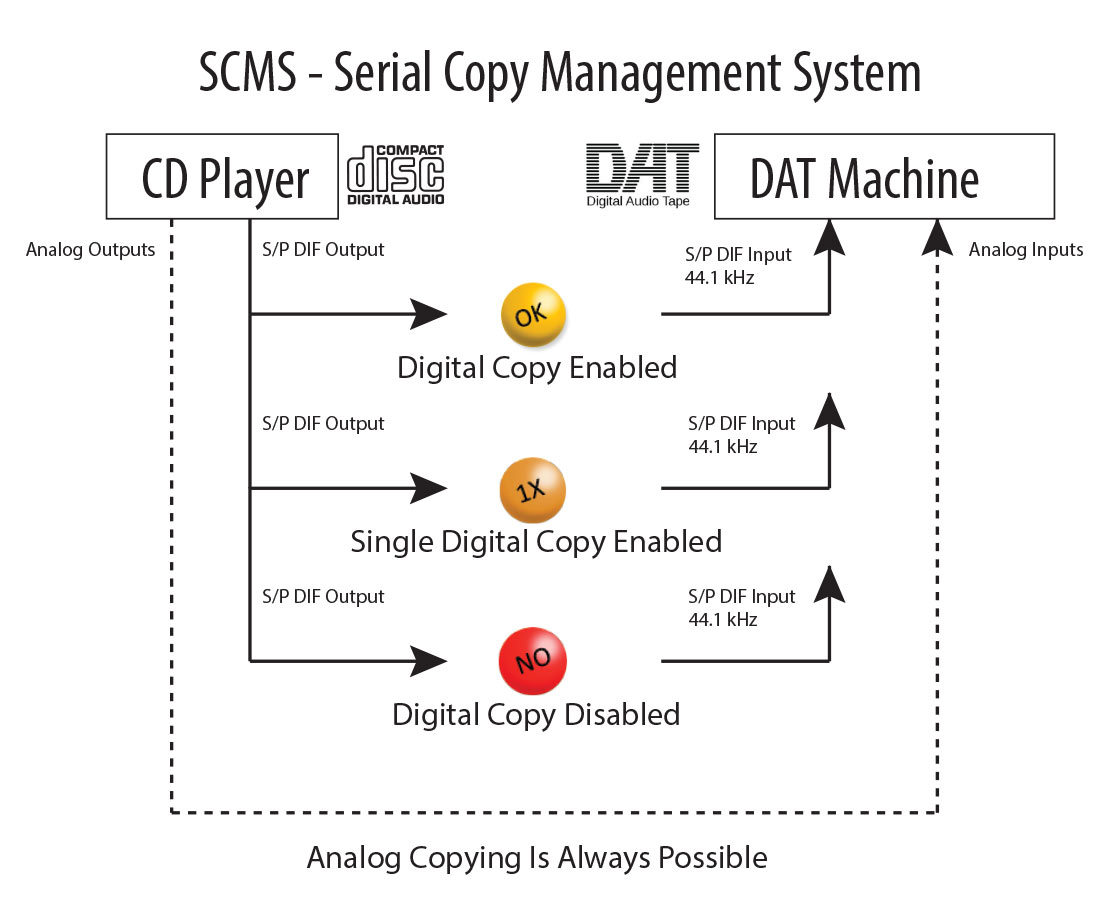Protecting Digital Audio: Part I
Based on the responses I got to yesterday’s post on the HDACC by Essence and the value of having an HDMI digital input/output on your external DAC, I thought I would drill a little further into the topic. The “resolution” restrictions on the normal S/P DIF outputs came as a surprise to a number of readers. It’s true…you cannot get 192/96 kHz/24-bits in stereo or surround out of the S/P DIF optical or coaxial output from a DVD or BD player. Why is it necessary to have an HDMI connection or some sort of conversion box to gain access to the higher quality sound included on physical products?
To get the answer to these questions, you have to reach back to a past before the world of iTunes, Napster, computer audio and uncompressed audio files. The major labels had no idea that digital audio, network transfers, computer playback and poor quality compressed MP3’s would ever be as big as they’ve become. In fact, I think the decline of the record industry is largely because the executives in the glass towers over in Burbank kept their heads in the sand for over 10 years while illegal digital files, websites and computer audio was on the rise. It should come as no surprise that today they make more revenue from digital downloads than from physical record sales.
It all started with the CD. The labels regarded the quality of the audio on compact discs to be equivalent to their masters and they didn’t want people to make copies. Remember this was the 1980s and we were still making realtime copies from LPs and CDs to cassettes. No threat there.
Figure 1 – The SCMS copy management system for DAT Machines. [Click to enlarge]
The first “consumer” digital machines capable of making copies were DAT machines (Digital Audio Tape). They really never caught on but people like me had to have one (in fact, I had variety of them AND I still maintain a professional SONY machine so that I can play tapes from those years!). DAT machines had two sampling frequencies: 44.1 and 48 kHz. The decks included both analog (balanced and unbalanced) and digital inputs (AES, S/P DIF and SDIF on some). While it was not big deal to make an analog transfer of a compact disc (or any other audio format) using the analog inputs, the powers that be didn’t want users to be able to make digital copies from the S/P DIF out of your CD player to the S/P DIF input of the DAT machine. So the labels lobbied hard and got a restrictive “copy protection” scheme known as SCMS added to the 44.1 digital inputs of all consumer DAT machines.
SCMS (Serial Copy Management System) was the brainchild of Sony and Phillips. The companies were pushed hard by the RIAA (the Recording Industry Association of America) to come up with a way to prevent lossless copying of music. Basically, the SCMS set a digital bit in the data stream to prevent or manage digital copying. There were options for allowing copying (professional used this mode), allow a single copy or prevent any copying.
The SCMS system and the unreliability of the DAT format in general prevented the format from widespread acceptance. But the seeds were planted regarding digital copy protection. As we’ll see in the next couple of installments, the RIAA and its member companies are still stuck in the same old way of thinking about their catalogs…at least when it comes to physical digital audio formats.



As a regular on the Oppo threads at AVS Forum, I’ve run into folks who have optical or coax S/P DIF inputs as well as multichannel analog jacks (but no HDMI) on their older AVRs and who are so hypnotized by the word “digital” that they insist on using the S/P DIF output, even though that guarantees that they’ll be getting lossy Dolby Digital on surround material, instead of the much higher-quality signals they would get out the Oppo’s analog jacks.
When I try to explain that the only signal optical or coax is permitted to carry that’s not subjected to lossy compression is CD-quality stereo, and that any surround signal will be like a high-quality mp3, its as if they’re putting their fingers in their ears and saying “Na-Na-Na I can’t hear you!”
As we both know, it’s very difficult to change established patterns for anyone…and doubly difficult to change the mindset of an audiophile.
A couple of points that I should point out however. Using the S/P DIF output from your Oppo or any other optical disc player with an optical or coaxial output can output 48 kHz/24-bit stereo PCM, Dolby Digital (AC-3) at 448 kbps in stereo or surround and DTS at 1500 kbps for stereo or surround. This choice is not terrible for most audiophiles. It’s true that the stereo output has the sample rate cut in half…but as we’ve seen there’s very few labels or releases that come close to that threshold. And the bit rates of both Dolby and DTS are well above the usual MP3 files you get from standard download services.
Once people understand what they’re doing with their hardware and content AND the types of connections that they’re using, then they can choose to pick any path…including ones that have shortcomings. This is my approach to the endless “love fest” in print and online for anything DSD.